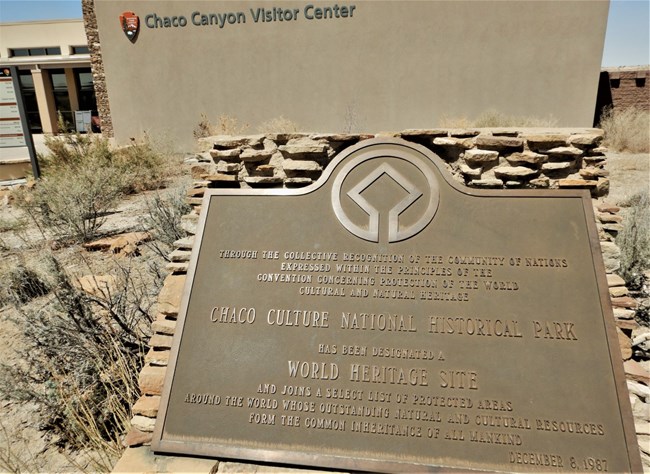
NPS Photo Chaco Culture National Historical Park Visitor CenterInside the visitor center, you will find a museum with exhibits on ancestral Pueblo daily life, the Chacoan landscape, and more. There is also a 26-minute film to watch and a bookstore run by the Western National Parks Association. 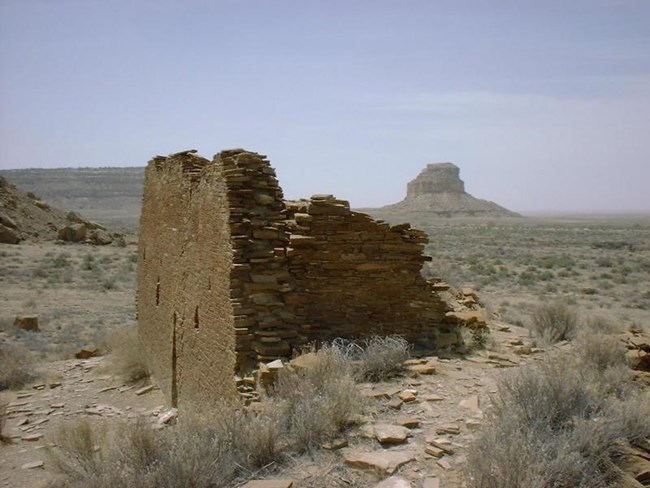
NPS Photo Una VidaUna Vida is a Chacoan “great house,” a large pre-planned multi-storied public building with distinctive masonry, formal earthen architecture, and a great kiva. Una Vida exists today in a near-natural state of preservation, free from major vandalism, and with only minor excavations and preservation repairs. A one-mile (1.6 km) roundtrip (including petroglyphs) trail begins at the NE corner of the visitor center parking lot. Portions are rocky, steep, and slippery when wet. Take water and travel in small groups to lessen impacts to this fragile site. 
NPS Photo Hungo PaviHungo Pavi is an unexcavated Chacoan "great house" (monumental public building) containing over 150 rooms, a great kiva, and an enclosed plaza. It is a good example of what Chacoan sites look like without excavations - covered with a protective blanket of wind-blown sand and native vegetation. Travel in small groups to lessen impacts to this fragile site.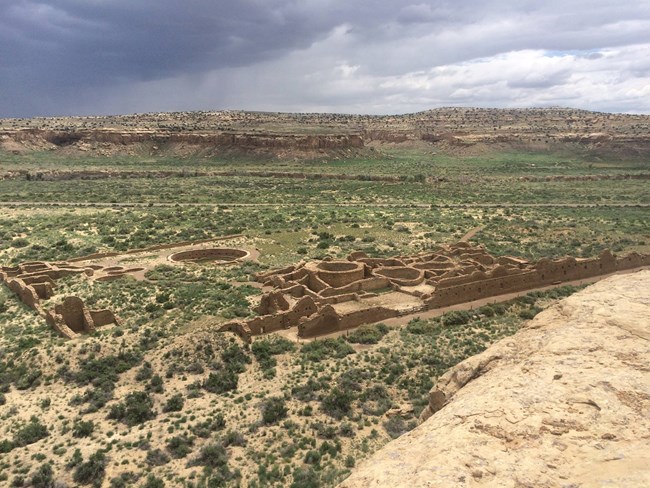
NPS Photo Chetro KetlChetro Ketl is the second-largest Chacoan great house. It covers more than 3 acres, and contains a great kiva and elevated kivas. As builders constructed second and third stories, they created an elevated plaza that stands 12 feet above the canyon floor. Located 4.5 miles (7.2 km) from the visitor center on the 9-mile (14.5 km) canyon loop drive, the trail through Chetro Ketl is 0.5 miles (0.8 km) roundtrip. It is graveled, and climbs several short, steep rises, so assistance is recommended for people using wheelchairs.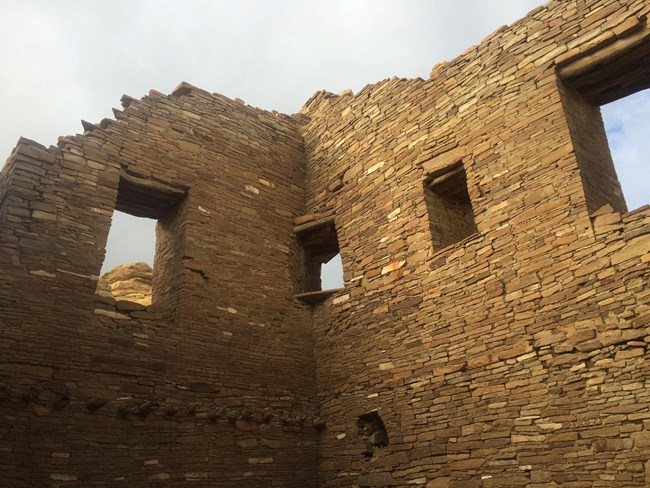
NPS Photo Pueblo BonitoPueblo Bonito is the most thoroughly investigated and celebrated cultural site in Chaco Canyon. It is the only "great house" within the canyon where visitors can walk through the rooms. Incredible engineering techniques and intentional detailed masonry are highlights of this 0.5 mile (0.8 km) roundtrip walk. This is a must see when at Chaco Culture National Historical Park.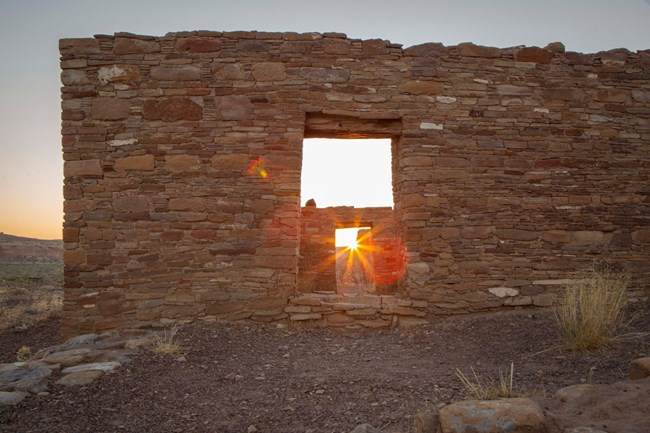
Charles Cutter Casa RinconadaCasa Rinconada, a community site on the south side of Chaco Canyon, affords a different view into Chacoan life than the great houses on the north side of the canyon thought to be primarily used as public spaces. Excavations of the Casa Rinconada community in the 1930s and 40s by the University of New Mexico field school illuminated that new structures were frequently built over top of older structures no longer being used and that old buildings were often remodeled and incorporated into new construction. Several potential astronomical alignments have been identified within the great kiva as well. Casa Rinconada is the largest excavated great kiva, and several small house sites can be found along this 1-mile (1.6 km) loop. The trail is gravel with several short, steep rises and steps, so assistance is recommended for people using wheelchairs.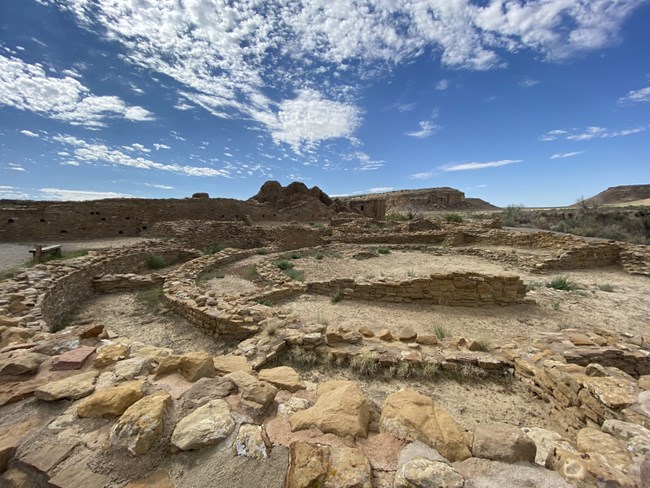
NPS/Jamie Peters Pueblo Del ArroyoThe great house of Pueblo del Arroyo was planned and constructed in two short phases, from approximately 1065 to 1150 CE. Though smaller than earlier great houses, the structure has many typical great house attributes. But unlike other great houses in the canyon, it was built away from cliff walls, in the open near the arroyo. Another unusual feature is the tri-wall structure. Very few of these tri-wall structures have been found in the Southwest – three of those are at Aztec Ruins National Monument. The one found at Pueblo del Arroyo is the only one known in Chaco Canyon. A walk around the 0.25 mile (0.4 km) Pueblo del Arroyo loop gives you a chance to contemplate life in a smaller, later great house.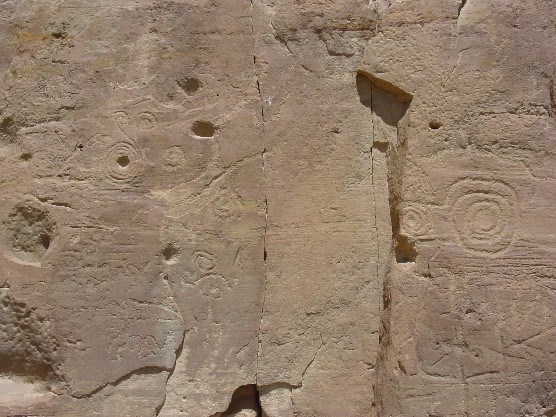
Russ Bodnar Petroglyph TrailThroughout Chaco Canyon, Ancestral Pueblo people, and later Navajo people, carved petroglyphs and painted pictographs on the sandstone walls of the canyon. A walk to Una Vida, a walk along the Petroglyph trail between Pueblo Bonito and Chetro Ketl, or a hike on the Peñasco Blanco trail allows you to marvel at some of these ancient images.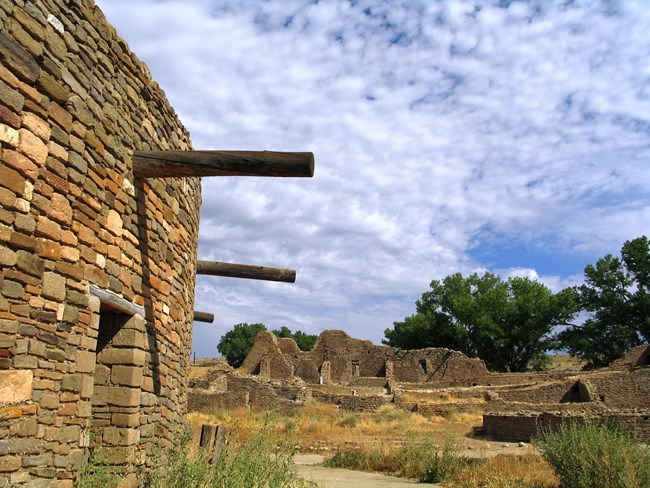
NPS Photo OutliersIt doesn't stop with just Chaco Canyon! Check out this page to learn about other ancestral Pueblo sites and how far the Chaco Phenomenon truly extended. |
Last updated: October 17, 2024
